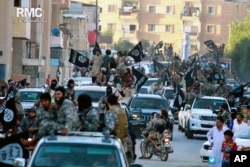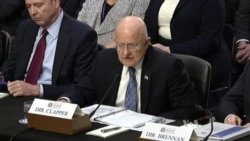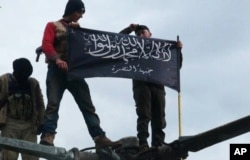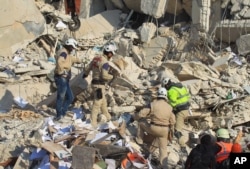Syria is quickly becoming the heart of an increasingly unpredictable world, serving as a cauldron for many of the most critical threats facing the United States.
The grim appraisal came Tuesday, as top U.S. intelligence officials briefed lawmakers in Washington on the newest "Worldwide Threat Assessment," described by National Intelligence Director James Clapper as a "litany of doom."
Many of the concerns in the latest assessment are familiar, ranging from terror groups like Islamic State and al-Qaida to state sponsors of terror like Iran, and to Russia, aggressively thrusting itself onto the world stage as a rival to U.S. power.
Yet despite differing aims and means, the one thing that links so many of these threats together is Syria, where the U.S. and coalition allies have so far limited their involvement to backing anti-Islamic State forces.
Plagued by civil war and an ever-growing humanitarian crisis, Syria has seen each player seek to impose its will on the tattered country, often at odds with the others.
To date, the conflict has now attracted more than 38,200 foreign fighters, including at least 6,900 from the West, Clapper told members of the Senate Armed Services Committee.
Islamic State
More than half of those fighters are thought to have joined Islamic State's self-declared caliphate, which still boasts a force of up to 25,000 fighters despite more than a year of U.S. and coalition airstrikes.
Watch: National Intelligence Director James Clapper briefing lawmakers.
But the group's staying power, thanks to its Syrian base, is only one of the factors that have helped turn Islamic State into "the preeminent terrorist threat," Clapper warned.
One key concern, Clapper said, is how the group is using the Syrian humanitarian crisis to spread its reach.
"One technique they've used is taking advantage of the torrent of migrants to insert operatives into that flow," he cautioned.
Clapper and other intelligence officials also worry Islamic State has managed to turn its de facto capital of Raqqa into the center of a command-and-control network, to "direct and inspire attacks against a wide range of targets around the world."
That includes inspiring what officials say are "homegrown violent extremists," such as those who carried out deadly attacks in recent months at an armed forces recruiting office in Tennessee and a local government center in California.
Clapper said such attacks, coming with little or no warning, pose the biggest internal threat to the U.S. while also serving as fodder for Islamic State propaganda.
Combine Islamic State's social media success and the group's eight established branches — including a growing base in Libya — and Clapper said the group's estimated "strength worldwide exceeds that of al-Qaida."
Al-Qaida
Yet al-Qaida, too, remains a potent threat, continuing to plot attacks against the U.S.
U.S. intelligence believes much of the core group's leadership in Afghanistan and Pakistan has been decimated. But officials say that along with its Yemeni branch, al-Qaida in the Arabian Peninsula (AQAP), its Syrian branch — Jabhat al Nusra — is now thought to be one of its most capable.
Analysts say al Nusra is also growing in strength in Syria, ingratiating itself with many of the smaller, less radical rebel groups trying to overthrow President Bashar al-Assad. It has an estimated 6,000 to 9,000 fighters at its disposal.
Russia, Iran
Making Syria even more treacherous for the U.S., according to the new threat assessment, is the presence of Russia and Iran, which for now are working together to prop up Assad’s regime.
It seems to be working.
"The Russian reinforcement has changed the calculus completely," Defense Intelligence Agency Director Lt. Gen. Vincent Stewart told lawmakers. "I am more inclined to believe he [Assad] is a player on the stage longer term than he was six months ago."
Stewart said such Russian-Iranian cooperation is likely to end as both compete for dominance in the region, but Iran will make it work for at least the foreseeable future for one reason.
"The ability to procure weapons from Russia without any preconditions," he said. "Within the next two to five years, we can expect Iran to invest in some of those weapon technologies being displayed in the Syria battlefield by the Russians."
It is a prospect that has long worried military and intelligence analysts.
"They [the Russians] are formalizing their alliance with Iran, Hezbollah and Syria, those are two state sponsors of terror and a major terror organization," Christopher Harmer, senior naval analyst at the Institute for the Study of War, told VOA back in October.
"We have to look at these two state sponsors of terror and that foreign terrorist organization as if they had access to top-end capabilities that they didn't have previously," he added. "That makes those states and that foreign terrorist organization much more capable, much more dangerous."
Already, Tehran has thousands of forces on the ground in Syria, including its own Iranian Revolutionary Guard Corps and Shia militia fighters from Iraq, Lebanon, Pakistan and Afghanistan. Analysts say some of them are just as brutal as Islamic State.
Such forces "will probably deepen sectarian tensions in response to real and perceived threats from Sunni violent extremists and to advance Iranian influence," Clapper warned.

















